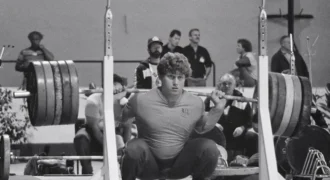Introduction: Why Purpose and Passion Matter in Coaching
What many people don’t realize is that when someone leaves the military, the biggest challenge isn’t always physical, it’s the loss of purpose. That sense of identity, mission, and impact can feel suddenly distant. And if you’re a coach reading this, ask yourself: What if coaching was taken away from you tomorrow? What would that loss of purpose feel like?
At the First Annual Soldiers to Sidelines Summit, I had the honor of speaking to a remarkable group, veterans and active duty service members preparing to transition into the world of coaching. My message was simple, but powerful: when you lead with purpose and coach with passion, you can create transformational change in teams, in athletes, and within yourself.
That’s the reality for many of our service members. But here’s the good news: coaching offers a new mission. It’s an opportunity to take the leadership, discipline, and resilience honed in service and redirect it toward developing athletes and building strong teams.
I’m Melissa Mercado, a Certified Strength and Conditioning Specialist, Tactical Strength and Conditioning Facilitator, and currently the Tactical Manager at TeamBuildr. In this blog, I’ll walk you through how to identify your why, lead with passion, and build systems that let you plan with purpose, so you can create lasting impact as a coach and leader.
Let’s dive in.

Image: Headshot of Melissa Mercado
1. My Story: The Journey That Shaped Me
Let me start by asking you a question: What drew you to coaching? When did your purpose begin to take shape?
For me, it started early. My family was big on health and wellness, watching my dad hit the weight room, even on vacation, sparked a curiosity in me. That seed grew stronger in high school when I first stepped into the weight room as a track athlete. I remember throwing 95 pounds on the bar for a back squat, somehow hitting it with good form. In that moment, I felt strong, capable, and driven to learn more.
That passion led me to earn my degree in Exercise Science with a concentration in Strength and Conditioning at Radford University. There, a professor saw potential in me and invested deeply in my growth. Through his mentorship and a transformative internship experience, I learned what it meant to coach with purpose.
I went on to intern at VCU and Clemson, each step reinforcing my identity as a coach. Eventually, I accepted a position in tactical strength and conditioning with the U.S. Marine Corps, despite having no prior experience training Marines. But the belief others had in me gave me the confidence to say yes.
At Quantico, I trained a Colonel who earned his highest Physical Fitness Test score ever and more importantly, he believed in me. That experience re-lit my fire and reminded me that this path is exactly where I’m meant to be.
Since then, I’ve worked with the Wounded Warrior Battalion and the School of Infantry East, continuing to grow as a coach and leader. Today, I serve as the Tactical Manager and Practice GM at TeamBuildr, supporting both tactical and sport coaches with tools that help them stay focused on what matters most: their athletes and their mission.
Every mentor, every challenge, and every opportunity has shaped my purpose, and now, I hope to help you discover or rediscover yours.

Image: Coach Mercado working with US Armed Forces
2. Define Your WHY and Build Your Mission Statement
As a coach or leader, understanding your why is the foundation for everything: your coaching philosophy, your ability to build trust, your communication style, how you plan practices, schedule, and collaborate with staff, it all starts with your purpose.
When you know your why, you make better decisions. You lead with clarity, build resilience, and inspire others, just like the coaches who inspired me.
I once worked with a Marine officer who challenged me to write my personal mission statement on an index card and place it somewhere I would see every day. He had his taped right to his desk as a constant reminder. That same day, I wrote five bullet points that reflected my own mission and that card has been with me at every position I’ve held since.
The purpose of this practice is simple but powerful: when things feel off course, whether you’re going through a losing season, facing team challenges, or just feeling burnt out, your mission statement brings you back to center. Even a quick glance can reconnect you to your purpose and remind you why you coach and what mission you’re living out.
Below is a photo of the very first mission statement I created with that Marine officer back at Marine Corps Base Quantico.
Now it’s your turn.
I challenge you to write down 4–5 bullet points that reflect your WHY, your core purpose and place it somewhere visible. Let it serve as your anchor, your compass, and your reminder when things get hard.

Image: Example of how to make your own personal mission statement to define your why and your purpose
When you know your why, you make better decisions. You lead with clarity, build resilience, and inspire others, says Melissa Mercado
Share on X
3. Coach with Passion: Purpose-Driven Leadership
Coaching with passion goes far beyond sideline energy or fiery halftime speeches, though there’s a time and place for those, too. Passionate leadership is deeper. It’s about showing up with heart, intention, and conviction. It’s about building trusting relationships and leaving a lasting legacy, not just wins and stats.
Think about a coach who shaped you, who truly led with passion. What qualities did they embody? How did they make you feel seen, capable, and inspired?
For me, it was a coach who believed in me at a pivotal time. During my strength and conditioning internships, I had my sights set on a dream opportunity at Clemson. I doubted myself. I wasn’t sure I was good enough. But my coach pushed me, simply said, “Just do it.” That belief gave me the courage to go for it. I landed the internship, and it changed my path.
That’s the power of passion-driven leadership. When a coach leads with purpose, it can transform not just one athlete, but an entire team culture. Passion isn’t something you manufacture, it’s something anchored in your purpose. Without that foundation, we risk going through the motions. When adversity hits, losses pile up, performance dips, or challenges arise, we tend to fall to the level of our preparation and conviction. But when we’re rooted in purpose, guided by that mission we intentionally built, those hard moments become just a little more manageable. Purpose gives us direction. Passion gives us fuel. Together, they define how we lead and the legacy we leave behind.

Image: Graphic comparing the hype you see online vs. the things that translates to results and meaningful relationships in coaching
4. Two Types of Coaching: Transactional vs. Transformational
Now let’s dive into two distinct coaching styles: transactional and transformational.
Transactional coaching is centered on outcomes, control, and compliance. It often relies on external motivators, think rewards, punishments, or playing time. This approach might sound like: “Just win the game.” The focus is on short-term results, not long-term development.
Transformational coaching, on the other hand, is rooted in relationships, growth, and internal motivation. It sounds more like: “Let’s get 1% better every day so we can grow as individuals and as a team.” This mindset prioritizes connection, purpose, and personal development, leading to more lasting impact.
When you coach transactionally, you might notice your focus narrowing to stats, wins, and control. When you shift toward transformational coaching, you start investing in your athletes as people first. You get to know them. You build trust. You lead with empathy and purpose.
The result? Athletes perform better. Team culture improves. And most importantly, your impact goes beyond the scoreboard.
When you coach transactionally, you might notice your focus narrowing to stats, wins, and control. When you shift toward transformational coaching, you start investing in your athletes as people first, says Melissa Mercado
Share on X
5. Plan with Purpose: Building Systems for Impact
We’ve rediscovered our why. We’re coaching with passion and purpose. Now, it’s time for a plan.
Purpose is powerful, but without a strategy behind it, it stays abstract. This is where systems come in, your planning, communication, and development strategies must align with your mission and values. Passion only becomes truly impactful when it’s made visible through intentional action.
When we talk about developing athletes, building discipline, and leaving a legacy, we have to ask: do our daily systems reflect those goals? Do our practice plans, drill selections, schedules, and communication methods reinforce the culture we’re trying to build?
Let’s look at Reactive vs. Intentional Planning:
Reactive Coaching
Reactive Coaching happens when we respond to problems in the moment, for example, an athlete misses a goal, and the entire team does burpees. While this can sometimes build character, it’s not sustainable or strategic.
Intentional Coaching
Intentional Coaching means designing practices before problems arise, with your values in mind. Maybe you build in leadership drills where athletes are encouraged to learn from one another. That’s not just about developing skills, it’s about building people. The coach who chooses drills with life lessons in mind is building something bigger than a season.
To lead with purpose, we must plan with purpose. This means crafting intentional schedules, designing meaningful drills, and fostering thoughtful communication with both athletes and staff.
Your systems should reflect your mission. If you value leadership, are you building it into your practices? If you value communication, is that modeled in your staff meetings? When systems are consistent and aligned with your purpose, they build trust, clarity, and consistency.
So ask yourself: do your current plans reflect the leader you want to be?
6. How Purpose Becomes Practice: A Funnel That Translates Vision into Action
Putting It All Together: A Funnel for Impact

Image: Graphic showing how to funnel your purpose into your daily plan for a Foundational Approach
Now let’s bring everything together into a simple, actionable funnel that helps you align purpose with practice.
WHY – Your Mission & Purpose
This is the foundation of everything. Your “why” is your mission statement, your core purpose as a coach and leader. It’s the widest and most important part of the funnel because everything else flows from it. Without a clear and compelling “why,” your planning lacks consistency, your communication lacks clarity, and your leadership lacks confidence.
WHAT – Your Focus Areas & Goals
This is where you define what matters most: team culture, performance goals, leadership development, character growth. These are the key outcomes you want to work toward, rooted in your purpose and driven by your values.
HOW – Your Systems & Strategies
This is the bridge between intention and action. Here’s where your systems come into play: practice structure, communication methods, feedback loops, how you motivate and reward effort. This is where passion becomes visible through consistent, intentional action.
DAILY PLAN – The Grind
This is where the work gets done. Your reps. Your drills. Your daily check-ins, schedules, and routines. This is the space where transformation happens, through small, daily steps aligned with your mission.
Staying connected to that mission in the midst of daily demands can be challenging. That’s where the right tools can make a difference.
If you’re looking for practical ways to stay aligned with your purpose while managing the daily workload, consider using a practice planning tool like TeamBuildr Practice. It’s designed to help coaches streamline the planning process, allowing you to build and schedule practices, track hours, and collaborate with your full support team: coaches, strength staff, athletic trainers, and athletic directors.
Tools like this aren’t about adding more to your plate, they’re about giving you back your time and focus, so you can zero in on what truly matters: coaching with passion, leading with purpose, and serving your athletes.

Image: Example of a tool to help you organize your schedule and make the most of your day
I challenge you to use this model to realign your coaching approach. Does your daily grind reflect your mission? Are your systems and strategies reinforcing the culture you want to build? Use this funnel as a framework. Not just to guide your planning, but to lead with lasting impact.
melissa@teambuildr.com
TeamBuildr.com/practice

The post Plan with Purpose, Coach with Passion appeared first on SimpliFaster.







